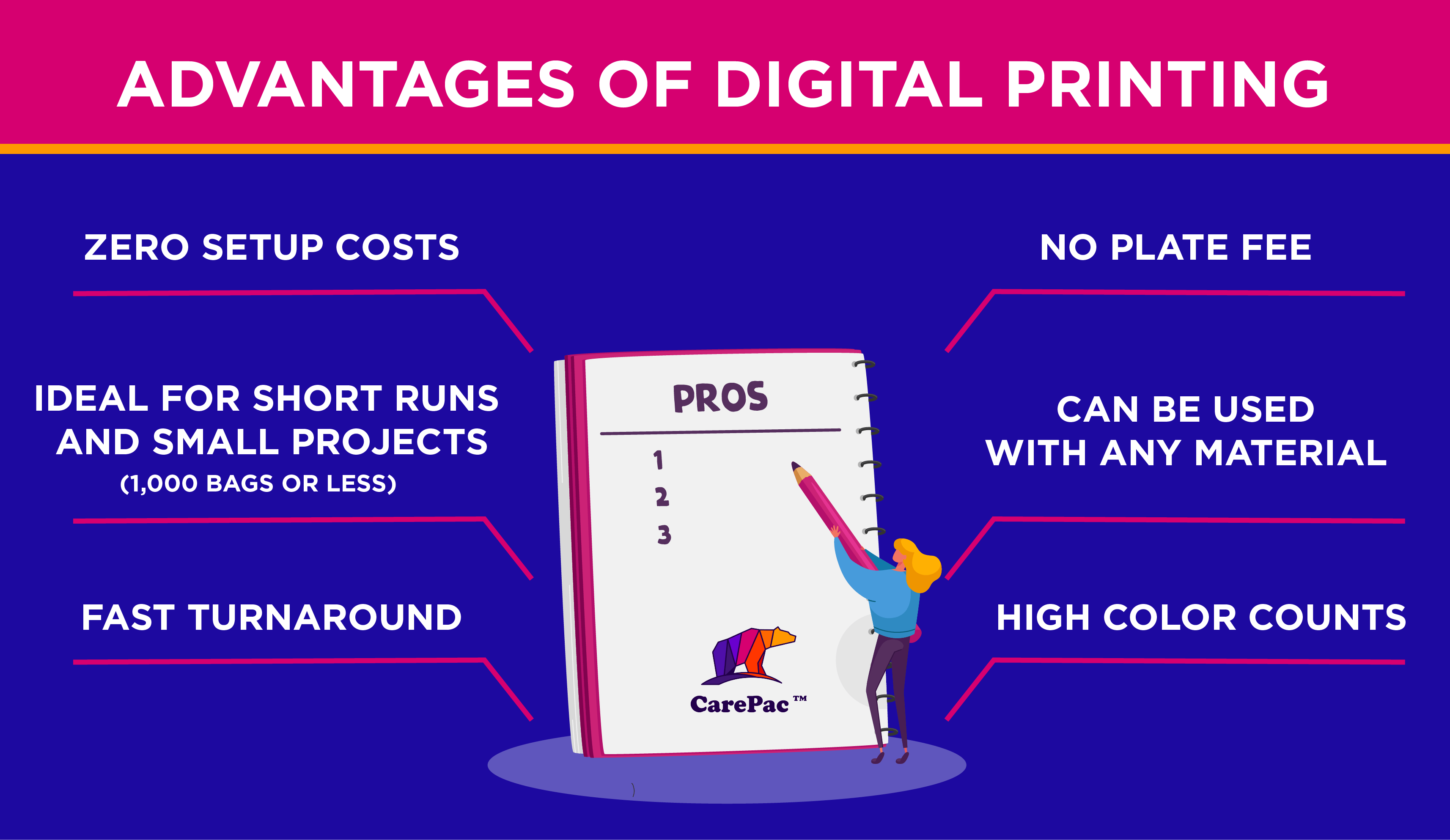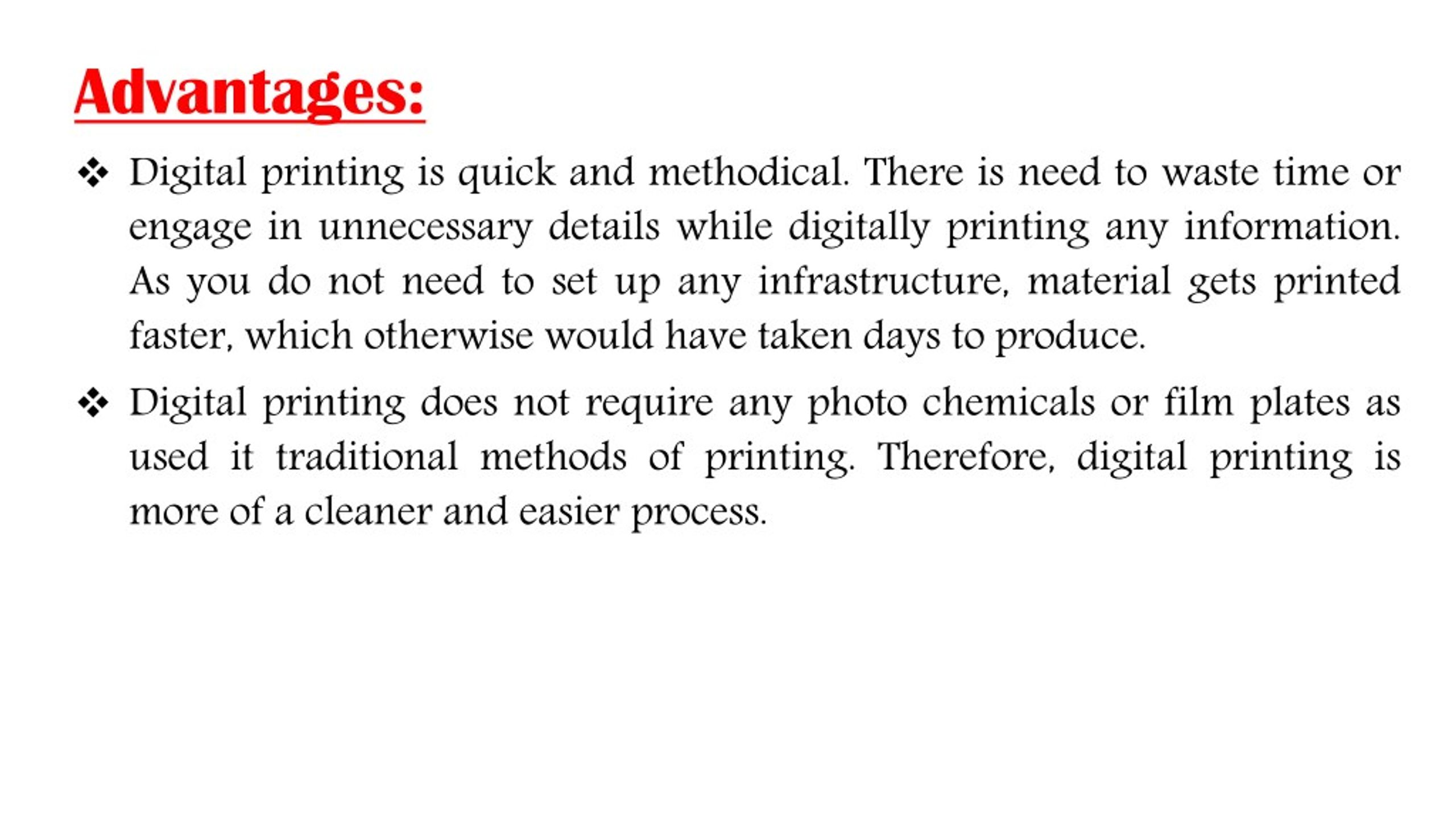The 10-Minute Rule for Digital Printing
How Digital Printing can Save You Time, Stress, and Money.
Table of ContentsSee This Report on Digital PrintingNot known Facts About Digital PrintingUnknown Facts About Digital PrintingMore About Digital PrintingIndicators on Digital Printing You Need To Know6 Easy Facts About Digital Printing Described
Variable data printing, such as direct mail with personalized codes and addresses, is ideally fit for digital printing. Digital fast printing only requires four actions of design, testimonial, printing and binding to obtain every little thing done. Digital quick printing has an unrivaled advantage: print on need.According to PMMI, digital printing permits brand names and suppliers to react rapidly to consumer demands while improving the supply chain, minimizing warehousing expense and waste, and delighting in faster time to market. That all sounds excellent, yet how does this innovation do all that? The major differentiator of these modern technologies is that there are no set up costs and no plates with digital printing.
Facts About Digital Printing Revealed
According to Wikipedia, the biggest distinction between digital printing and typical techniques such as lithography, flexography, gravure, or letterpress - Digital Printing is that there is no requirement to change printing plates in electronic printing, whereas in these analog printing approaches the plates are repetitively replaced. This causes quicker turn-around time and decreases expense when utilizing electronic printing.
Rapid production indicates getting your item to market faster. It also indicates it's less complicated and faster to make adjustments later, when you change a dish, add a SKU, or produce seasonal packaging. Digital printing is highly flexible, so it's very easy to make adjustments to the plan layout quickly. Everything returns to the plates.
With traditional printing methods, short-run printing is just not possible. Since a wonderful design can make or break your item, electronic printing regularly develops top notch, clear and colorful graphics each time.
Digital printing is the procedure of printing digital-based images straight onto a range of media substrates. There is no requirement for a printing plate, unlike with offset printing. Digital data such as PDFs or desktop computer posting files can be sent out straight to the electronic printing press to publish on paper, photo paper, canvas, fabric, synthetics, cardstock and various other substratums.
Digital Printing Fundamentals Explained
According to PMMI, digital printing permits brand names and makers to react quickly to customer demands while improving the supply chain, minimizing warehousing price and waste, and enjoying faster time to market. That all audios terrific, but exactly how does this technology do all that? The major differentiator of these modern technologies is that there are no set up costs and no plates with electronic printing.
According to Wikipedia, the best difference in between electronic printing and typical approaches such as lithography, flexography, gravure, or letterpress is that there is no demand to change printing plates in electronic printing, whereas in these analog printing techniques home plates are repetitively replaced. This results in quicker turn-around time and reduces cost when utilizing electronic printing.

Top Guidelines Of Digital Printing
Extra supply can mean more waste in the future. With standard printing methods, short-run printing is just not feasible. Due to the fact that a great style can make or break your item, digital printing consistently creates high-grade, clear and vivid graphics each time. Digital printing on versatile pouches includes the intense, vivid, and specific graphics that virtually beckon customers to get to out and touch them.

According to PMMI, digital printing enables brand names and makers to respond quickly to consumer demands while boosting the supply chain, lowering warehousing price and waste, and delighting in faster time to market. That all audios excellent, but exactly how does this technology do all that? The significant differentiator of these technologies is that there are no set-up costs and no plates with digital printing.
The Digital Printing PDFs
According to Wikipedia, the best difference between electronic printing and conventional approaches such as lithography, flexography, gravure, or letterpress is that there is no need to change printing plates in digital printing, whereas in these analog printing techniques the plates are continuously changed. This leads to quicker turn-around time and decreases cost when using digital printing.
Fast production means obtaining your item to market quicker. It additionally implies it's simpler and faster to make changes later, when you transform a dish, add a SKU, or produce seasonal packaging. Digital printing is very versatile, so it's easy to make adjustments to the bundle style swiftly. Everything returns to the plates.

The 45-Second Trick For Digital Printing
Digital printing is the process of printing digital-based pictures directly onto a selection of media substrates. There is no demand for a printing plate, unlike with balanced out printing. Digital files such as PDFs or desktop computer posting navigate to this website data can be sent out straight to the electronic printing press to print theoretically, photo paper, canvas, material, synthetics, cardstock and various other substrates.